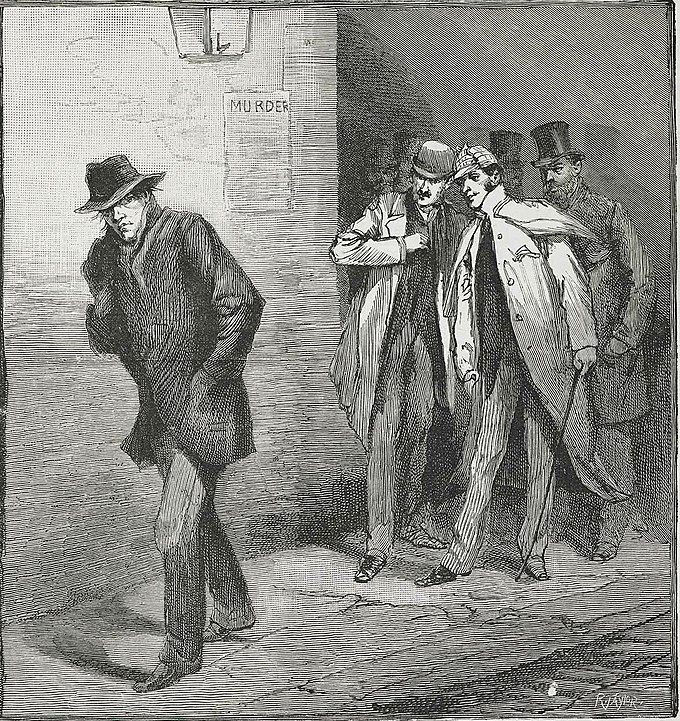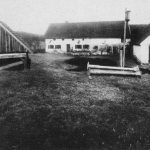
Jack the Ripper is perhaps one of the most infamous names in history, evoking images of foggy streets, mystery, and horror. Despite the countless investigations, theories, and speculations, the identity of Jack the Ripper remains unknown, leaving a legacy that has captured imaginations and inspired works of art and literature. From Victorian-era London to modern-day fascination, Jack the Ripper’s legend has endured for over a century. This article explores the various theories surrounding the mysterious killer’s identity and examines how this dark figure influenced both art and literature, leaving an indelible mark on creative expressions across generations.
Suspect Theories: Who Was Jack the Ripper?
The mystery of Jack the Ripper’s identity has fueled theories and speculations for decades. One prominent theory suggests that Jack the Ripper was a member of the British aristocracy. Some suspect Prince Albert Victor, Queen Victoria’s grandson, due to his erratic behavior and the protection offered by his royal status. Although there’s little substantial evidence, this theory has endured due to the intriguing social implications and the allure of royal scandal.
Another popular theory involves a Polish barber named Aaron Kosminski. Kosminski was linked to the murders due to his proximity to the crime scenes and a documented history of mental illness. In 2014, DNA evidence suggested a match between Kosminski and material found on a shawl at one of the crime scenes, though the reliability of this evidence remains contested.
A third compelling theory posits that Jack the Ripper could have been a doctor or surgeon, given the precision with which the murders were committed. Dr. Thomas Neill Cream, known as the “Lambeth Poisoner,” was a suspect due to his medical background and criminal record. However, Cream was in prison at the time of some of the murders, making this theory less convincing but still influential in popular culture.
The Influence of Jack the Ripper on Victorian-Era Art
The gruesome nature of Jack the Ripper’s crimes captured the public’s imagination, and Victorian artists and writers were no exception. His acts shocked London’s society, leading artists to portray the city’s underbelly in a way that hadn’t been seen before. Illustrations of London’s East End, where the murders took place, often portrayed a dark, grim setting filled with poverty and despair.
Some artists even depicted the Ripper himself, albeit in shadowy or obscured forms, emphasizing the terror of an unseen predator lurking in the fog. This era saw an increase in the depiction of macabre subjects in art, driven by the public’s morbid fascination. Paintings and illustrations often highlighted the fear and paranoia that gripped London, with works depicting dimly lit alleys, ominous figures, and terrified expressions.
Jack the Ripper’s Lasting Impact on Literature
Jack the Ripper’s story has been a catalyst for countless novels, short stories, and poems. Authors began to explore the psychology of killers in more detail, bringing darker and more complex characters into fiction. One of the earliest literary works inspired by the Ripper was Robert Louis Stevenson’s Strange Case of Dr Jekyll and Mr Hyde, published in 1886, just two years before the murders began. Although it predates the crimes, the novel’s exploration of duality and hidden darkness in individuals resonates with themes that became central to Ripper-inspired literature.
The murders also influenced Sir Arthur Conan Doyle’s Sherlock Holmes stories, which feature several mysteries set in London’s foggy streets. Although Holmes never encountered the Ripper directly, Doyle’s work mirrors the period’s fascination with crime, psychology, and the underworld. Later, books such as From Hell by Alan Moore and The Five by Hallie Rubenhold further examined the Ripper’s story, either as a mystery or as a social critique, highlighting the lives of the victims rather than the killer.
The Psychological Appeal of Jack the Ripper in Art and Popular Culture
One of the most enduring aspects of Jack the Ripper’s story is the psychological allure of the unknown. The Ripper was never caught, creating a mystery that allowed for endless interpretations in art and media. In paintings, literature, and later films, Jack the Ripper often symbolizes the dangers lurking in the human psyche. This portrayal made the Ripper a prime figure in early horror and thriller genres, a symbol of humanity’s fascination with the unknown and uncontrollable aspects of our own minds.
Art depicting the Ripper often exaggerates his anonymity, showing only shadowy figures or symbolic representations, playing into the concept of the faceless evil. This approach allows viewers to project their fears and ideas onto him, making the Ripper both a personal and universal symbol of dread.
The Role of the Press and Media in Shaping the Jack the Ripper Legend
The press played a significant role in making Jack the Ripper a household name, contributing to his impact on art and literature. In 1888, the media’s portrayal of the murders was sensationalist and often exaggerated. Graphic illustrations and sensational headlines sold newspapers, and in doing so, the press crafted a version of Jack the Ripper that was both a brutal killer and a mysterious, almost mythical figure.
This media portrayal not only fed the public’s fear but also inspired artists and writers to explore themes of crime and punishment. The Ripper legend grew as more theories emerged, with newspapers even receiving letters claiming to be from the killer. These letters, authentic or not, added a layer of mystery and intrigue, providing artists and writers with a powerful, albeit grim, source of inspiration.
Film and Television: Jack the Ripper’s Story Continues
As film and television developed in the 20th century, Jack the Ripper’s story found new audiences. Movies such as The Lodger (1927), directed by Alfred Hitchcock, took inspiration from the Ripper’s tale, focusing on the suspense and psychological horror of the unknown. This film, along with later adaptations, set a precedent for the Ripper as a central figure in thriller and horror genres, where his identity remains shrouded in mystery.
Television series and documentaries continue to explore the Ripper’s story, often reenacting theories or diving into investigative research. Shows like Ripper Street and documentaries on platforms like Netflix and the History Channel analyze evidence, interview historians, and bring new theories to light. These portrayals keep Jack the Ripper relevant in popular culture, sparking renewed interest and inspiring fresh interpretations in modern art and media.
Jack the Ripper and the Evolution of Crime Fiction
Jack the Ripper’s story marked a pivotal point in the evolution of crime fiction, a genre that emerged in the 19th century and has since grown in popularity. Authors like Agatha Christie, Dorothy L. Sayers, and Raymond Chandler have contributed to this genre, inspired by real-life mysteries, including the Ripper’s case. The narrative structure of a mysterious killer, combined with elements of investigation, suspense, and resolution, can be traced back to Jack the Ripper’s unsolved crimes.
The Ripper’s story inspired writers to focus not just on the “whodunit” aspect but also on the psychological and social implications of crime. In contemporary crime fiction, there is often a deeper exploration of the criminal’s psyche, echoing the mystery surrounding Jack the Ripper’s identity. This legacy continues to influence novels, films, and television series, with writers creating complex characters that reflect society’s darker sides.
Modern Artistic Representations and Exhibits
Jack the Ripper’s influence has reached museums, galleries, and exhibits worldwide. Modern artists often reinterpret the Ripper through a contemporary lens, questioning societal attitudes toward crime, justice, and victimhood. Art installations and interactive exhibits allow visitors to explore the Ripper’s story in a controlled environment, often encouraging reflection on how society reacts to crime and violence.
Exhibitions such as the Museum of London’s “Jack the Ripper and the East End” have examined not only the murders but also the social conditions of Victorian London, offering insights into the daily lives of those affected. This approach shifts the focus from the mystery of the Ripper’s identity to the broader impact of the crimes on art, society, and historical memory.
Final Thoughts
The mystery of Jack the Ripper’s identity remains one of history’s most tantalizing enigmas. Despite numerous theories, the killer’s true identity is likely to stay hidden, leaving room for endless fascination and reinterpretation. This mystery has not only captivated investigators but has also had a lasting impact on art and literature, inspiring works that delve into the psychology of crime and society’s fascination with the macabre. From Victorian paintings to modern films, Jack the Ripper serves as a symbol of humanity’s darker curiosity, reflecting our desire to understand the unexplainable. The mystery lives on, fueling art, literature, and popular culture with the allure of the unknown.
Key Takeaways
- Jack the Ripper’s identity remains unknown, inspiring numerous theories and speculations.
- Artists and writers of the Victorian era were influenced by the Ripper’s story, creating dark, atmospheric works.
- The mystery contributed to the rise of crime fiction, focusing on psychological and investigative themes.
- Media sensationalism shaped the Ripper legend, inspiring numerous literary and artistic portrayals.
- Modern films, television, and exhibits continue to explore and reinterpret the Jack the Ripper story.
FAQs
- Who are the main suspects in the Jack the Ripper case? Prince Albert Victor, Aaron Kosminski, and Dr. Thomas Neill Cream are among the most discussed suspects.
- How did Jack the Ripper influence literature? The case inspired early crime fiction and psychological explorations of killers, seen in works by Conan Doyle and others.
- Why is Jack the Ripper still relevant today? The mystery around his identity and his representation as a symbol of hidden evil keeps the story alive in art and media.




